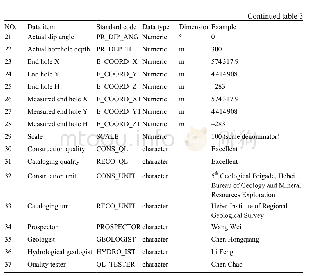《Table 2 Simplification of the basic soil layers》
For soils developed from the sedimentary parent materials,soil type is classified by the soil texture construction.The soil texture configuration is defined by a combination of three layers,that is,0–30 cm as the upper layer,30–60 cm as the middle layer,60–100 cm as the lower layer.Tibetan soils are classified as 11basic soil layers following the influence degrees of soil texture and gravel content on agricultural productions(Table 1).The 11 basic soil layers can be simplified according to the practical laws of fine classification for upper layers and broad classification for lower layers(Table 2).According to the combination of the upper,middle and lower basic soil layer types,five soil configurations are named as homogeneous pattern,body pattern,bottom pattern,heart pattern,and threesection pattern.The homogeneous pattern refers to only one basic soil layer in a100 cm soil profile,for example,the gravel soil and boulder-clay soil.The body pattern refers to two different basic soil layers(0–30 cm and 30–100 cm)in a100 cm soil profile,for example,a stony loam with 0–30 cm of the loam layer and 30–100 cm of the gravel layer.The bottom pattern refers to two different basic soil layers in one profile which are located at 0–60 cm and 60–100 cm layers,for example,a sand bottom gravel clay soil with a gravel clay layer in the upper and middle layers and a sand layer in the lower layer of the soil profile.The heart pattern refers to a soil profile with a 20–30 cm thick different basic soil layer in the middle of 20 to 50 cm.The three-section pattern refers to a soil profile with different basic soil layers in the upper,middle,and lower layers,for example,a gravel bittern-boulder clay heart-loamy soil with a loamy upper layer,a boulderclayey middle layer,and a gravel lower layer.
| 图表编号 | XD0027543400 严禁用于非法目的 |
|---|---|
| 绘制时间 | 2017.03.01 |
| 作者 | 高美荣、施建平、潘恺 |
| 绘制单位 | 中国科学院水利部成都山地灾害与环境研究所、中国科学院山地表生过程与生态调控重点实验室、中国科学院南京土壤研究所、中国科学院南京土壤研究所 |
| 更多格式 | 高清、无水印(增值服务) |
 提示:宽带有限、当前游客访问压缩模式
提示:宽带有限、当前游客访问压缩模式





